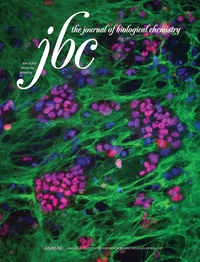The discovery of effective new antimalarial agents is urgently needed. One of the most frequently studied molecules anchored to the parasite surface is the merozoite surface protein-1 (MSP1). At red blood cell invasion MSP1 is proteolytically processed, and the 19-kDa C-terminal fragment (MSP119) remains on the surface and is taken into the red blood cell, where it is transferred to the food vacuole and persists until the end of the intracellular cycle. Because a number of specific antibodies inhibit erythrocyte invasion and parasite growth, MSP119 is therefore a promising target against malaria. Given the structural homology of cupredoxins with the Fab domain of monoclonal antibodies, an approach combining NMR and isothermal titration calorimetry (ITC) measurements with docking calculations based on BiGGER is employed on MSP119-cupredoxin complexes. Among the cupredoxins tested, rusticyanin forms a well-defined complex with MSP119 at a site that overlaps with the surface recognized by the inhibitory antibodies. The addition of holo-rusticyanin to infected cells results in parasitemia inhibition, but negligible effects on parasite growth can be observed for apo-rusticyanin and other proteins of the cupredoxin family. These findings point to rusticyanin as an excellent therapeutic tool for malaria treatment and provide valuable information for drug design.
Artículo del mes
Antimalarial activity of cupredoxins: the interaction of Plasmodium Merozoite Surface Protein 119 (MSP119) and Rusticyanin
Cruz-Gallardo I, Diaz-Moreno I, Diaz-Quintana A, Donaire A, Velazquez-Campoy A, Curd RD, Rangachari K, Birdsall B, Ramos A, Holder AA, De la Rosa MA.
Journal of Biological Chemistry, 2014, Vol. 288, 20896-20907IBVF



 English
English